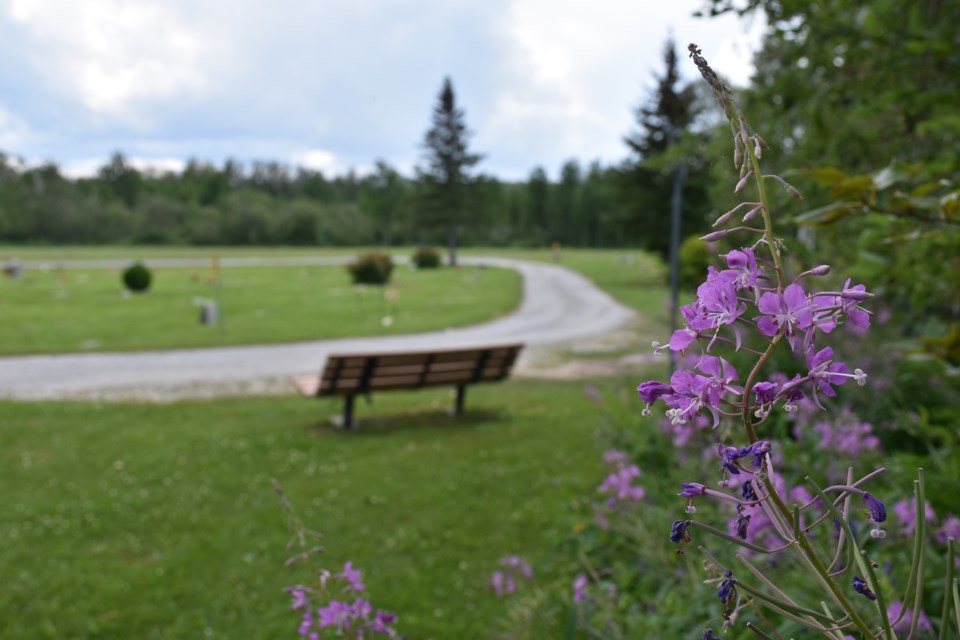TIMMINS - Timmins is celebrating Doors Open 2024 on Saturday, Oct. 5, from noon to 4 p.m. What is DO2024, you may ask? Doors Open is a provincial initiative organized by the Ontario Heritage Trust, celebrating local landmarks and heritage sites that we know but don’t “really know”.
The first Doors Open Day (La Journée Portes Ouvertes) took place in France in 1984. The idea spread throughout Europe and by 2003 all 50 members of the European Cultural Convention were taking part in the celebrations.
The concept came to Canada in 2000 when the City of Toronto launched the first Doors Open event in North America. Two years later, the Ontario Heritage Trust took on the programme and encouraged communities to start celebrating their local heritage. The Doors Open concept has spread to eight other provinces plus the Yukon. With the pandemic, the programme migrated online, but this year we are pleased to bring back an in-person event for Timmins — and yes, there is stuff to explore in our own backyard!
I have worked in the heritage business for over 30 years (shudder) and I always hear the same thing: “It would be great to promote our heritage, but we don’t have any really pretty Victorian buildings or ornate courthouses”.
No, we don’t — and I would like to say right now that there is more to Canadian history (and OUR history) than pretty Victorian houses. We have an extensive list of very interesting buildings and sites that merit a second look and a good poke-around. And that’s where Doors Open Timmins comes into play; this year we are featuring eight sites ready for you to explore – and here they are:
- Timmins Memorial Cemetery: Reverend Father Theriault used the churchyard on Fifth Avenue, Timmins, as a burial ground for his parishioners from 1912 to 1917. In 1917, space was a problem, and a cemetery beyond the town limits was chosen. A memorial to the victims of the 1928 Hollinger Disaster can be seen as well as the grave for hockey legend Bill Barilko and the Legion plot, added in 1937 for local veterans. You can pick up a map from the Timmins museum to help you explore the location.
- Hollinger House: Beginning in 1919, the Hollinger Mine built houses for its rapidly growing workforce. The iconic green-and-red tar-paper buildings eventually numbered over 350 and continued to house Hollinger workers until 1969. A museum interpreter will take you on a guided tour of this example, a reproduction of a 1936 home, located on the grounds of the Timmins museum.
- Timmins Museum: NEC: This public resource is dedicated to the presentation, promotion and preservation of local heritage. You can explore the permanent exhibition Where We Stand: Stories of the Land and try out the virtual-reality mining experience. The museum has a large gift shop filled with products from local artists and other Canadian-made goods!
- Timmins Public Library: One of the north’s most impressive buildings, the Timmins Public Library is an architectural gem. The high ceilings and huge wooden columns and beams make this a haven for book-lovers and information-seekers. Explore the library’s 100th anniversary exhibition during your visit!
- The Tisdale Cemetery: Established in 1915 at the urging of local undertakers Barton and Easton the cemetery located on Highway 101 still serves the community of South Porcupine. A section was added by the Legion to commemorate veterans.
- Quilts For Survivors: Founded in Timmins, Quilts For Survivors creates comfort and healing through the making and giving of quilts. With help from a nation-wide collective of volunteers, quilters craft full-sized blankets and send them to survivors of the Residential School System as a symbol of support, respect and love. Join us during Doors Open to learn more about this important work – located at 1 Bruce Ave. W. in South Porcupine.
- Porcupine Historical Park: The park houses artifacts that help tell the story of the Great Porcupine Gold Rush that began in 1909. Included is a steam locomotive from the Hollinger Mine (recently restored by Gorf Manufacturing and Contracting), a mine recorder's vault (original to the site, from 1910 and recently restored by DJC Renovations)) and an arrastra, a large wheel-shaped object found near the Buffalo-Ankerite Mine, which was used for grinding ore.
- Deadman’s Point (Whitney Cemetery): This cemetery is located off Haileybury Crescent, on Porcupine Lake. After the Great Porcupine Fire of 1911, some fire victims were buried there. A few of those original graves are still visible, most notably the crypt for the Weiss family and a monument from the Toronto Board of Trade erected on behalf of the citizens of Canada. As you look towards South Porcupine, you can imagine what the scene would have been like at the height of that fire.
If you’re taking part in Doors Open, make the Timmins museum at 325 Second Ave. your first stop and pick up maps and information related to the participating locations. You can also visit the Doors Open website for more details.
